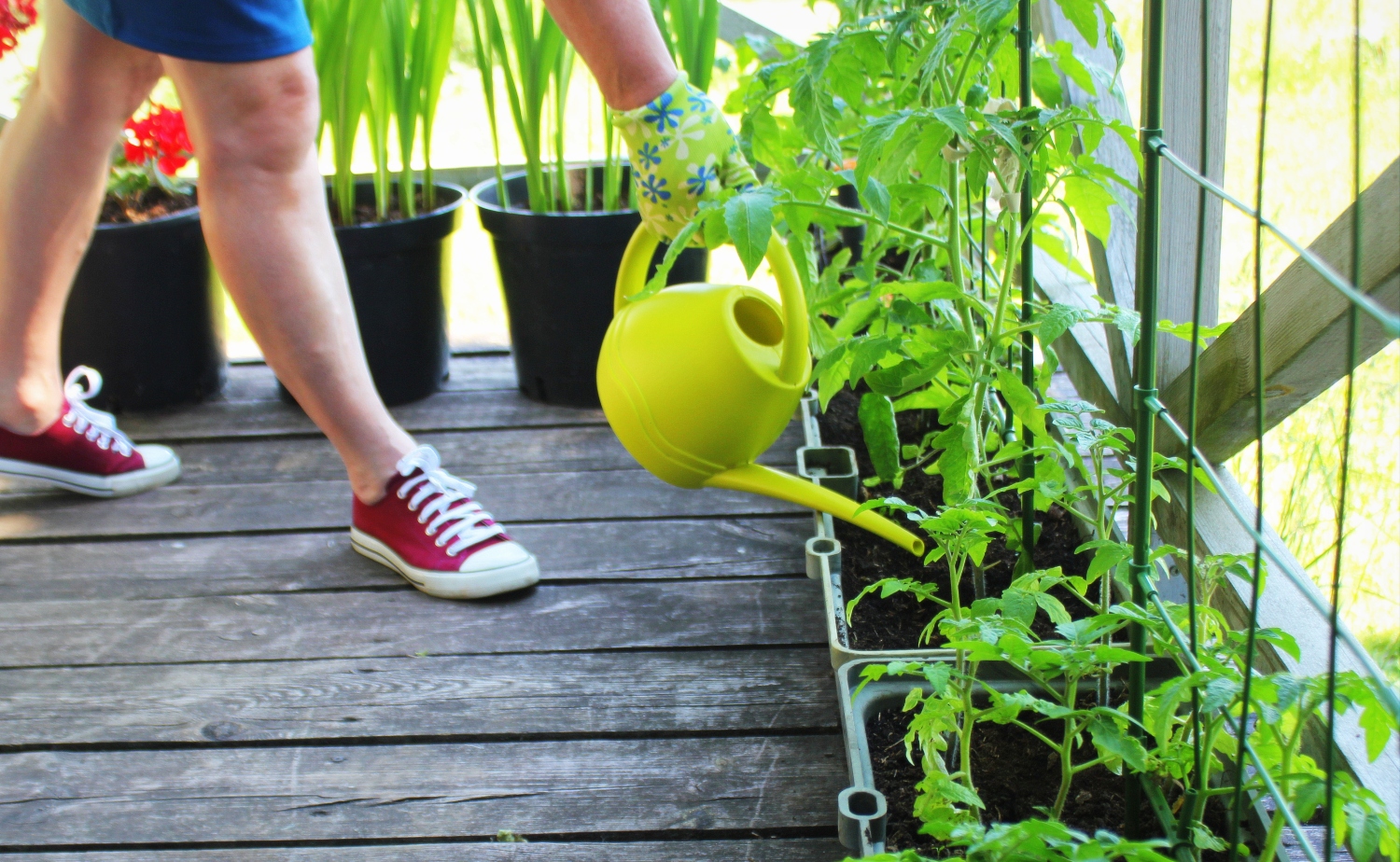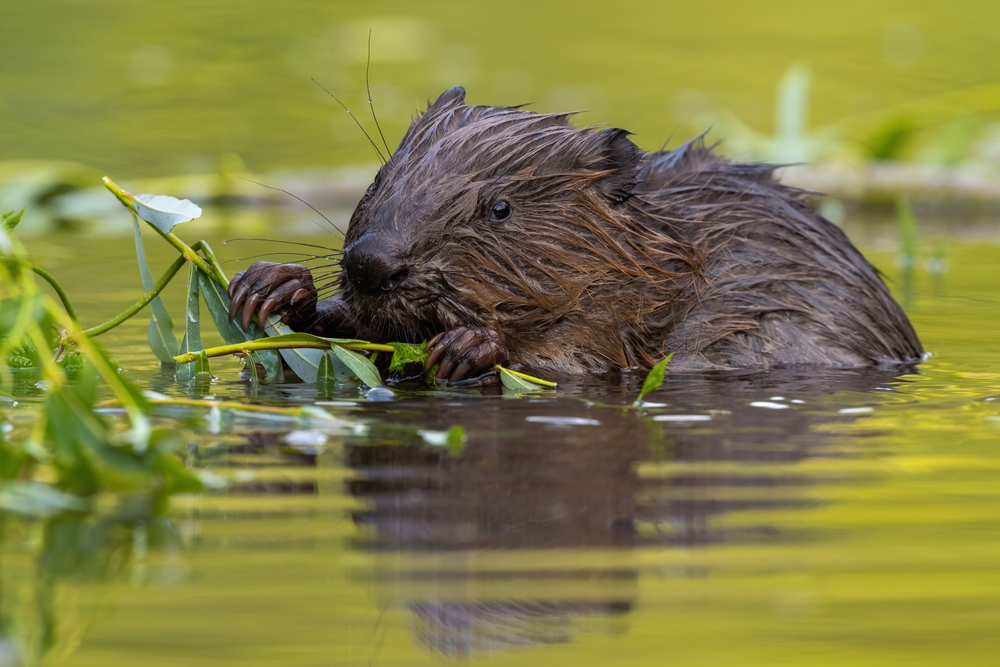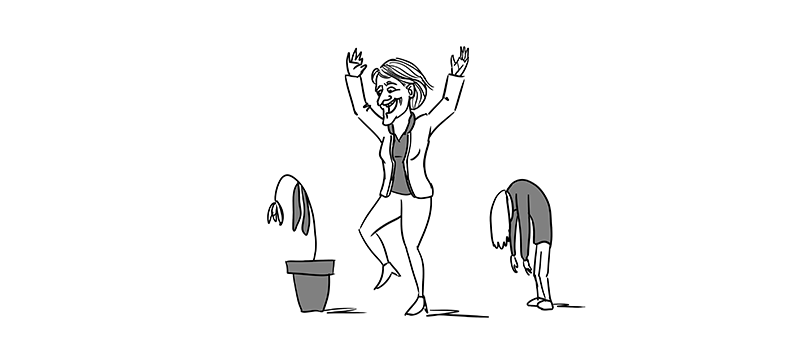It is spring and the dark months of sitting indoors are over. With a bit of luck you’ve got a balcony or a (shared) garden where you can enjoy greenery, sunshine and a cold drink. But how do you make sure your little patch of green is truly nature-friendly? Entomologist Hanneke Suijkerbuijk, landscape ecologist Nils van Rooijen and Urban Vegetation researcher Joop Spijker offer some tips.
Choose indigenous
Suijkerbuijk: ‘The best plants for your garden or balcony are indigenous plants because they are connected with the insects here. That means not only that these plants can feed the local insects, but also that the nutrients become available at the right moment. Right now, for instance, you see a lot of European orchard bees, and their flight period will be over by May. So they need suitable food now. Indigenous plants and the insects that feed on them are well-matched: the plant can defend itself sufficiently to cope with being fed on, and the insects can get around the plant’s defences well enough to get plenty to eat.’
Watch out for poison
Suijkerbuijk: ‘The main thing to avoid is putting poisoned plants on your balcony or in your garden. Sadly, a lot of the plants sold in garden centres are grown using toxic substances that are still on and in the plant when you buy it. Even plants labelled bee-friendly can contain such toxins. So choose plants and seeds that are genuinely organic, then you are guaranteed that there’s no poison on them.’
Let weeds grow
Suijkerbuijk: ‘If you want to make a bare garden look nice quickly and cheaply, let weeds grow. When a weed is still a tiny plant with a couple of leaves, you can use an app like Obsidentify to see which plant it is. Do you think it’s an attractive species? Then let it grow, or dig it up and transplant it somewhere else. Dandelions, for instance, are a good food plant for insects because they produce a lot of nectar and pollen.’ Van Rooijen: ‘Last year I let a bryony, a classic weed, grow in my garden. When it came in bloom with greenish, unobtrusive flowers, it was buzzing. It turned out there were bryony bees on it, a red-list species. They can find that one plant in no time.’
If you want to make a bare garden look nice quickly and easily, let weeds grow
Create diversity
Van Rooijen: ‘If you want to get the most out of your garden, go for biodiversity. The basis is a lawn that you allow to get a bit overgrown. Step two is to dig a pond (see tip 5). And then you can plant a tree and some shrubs. If you want to go further than that, build a little wall, leaving gaps in it. And have a pile of wood with a few branches for creatures to shelter in. Like that you get a tremendous diversity of mini-landscapes with gradients between them, creating transition zones. Biodiversity peaks when there are a lot of gradients in a small environment.’ Suijkerbuijk adds: ‘Pay attention to flowering times too. If you have plants flowering in spring, summer and autumn, then there is something for insects all year round. You can also consider having a mix of plants that flower by day and by night. The evening primrose, for instance, is very suitable for moths. Another advantage of diversity in your garden is that you reduce the risk of pests. Maybe one bush will get covered in aphids, but if you don’t have a whole row of the same plants, there isn’t much risk of the aphids transferring from plant to plant.’
Make a pond
Suijkerbuijk: ‘A lot of insects, like dragonflies and green lacewings, spend part of their life cycle in water. If you’ve got room for a small pond in your garden, they can live there – and it doesn’t have to be very big at all. Put in a couple of aquatic plants and it soon becomes a little ecosystem. It’s not such a good idea on a balcony, though – mosquito larvae like living in water too, and from the balcony they’ll get into your bedroom very easily.’
Keep it feasible
Spijker: ‘To be honest, I’m not much of a gardener myself. I can talk about it all right, but for myself I have to be a bit practical. If you don’t have much time, plant bulbs. They come up again every year. I’ve got bulbs and a buddleia on my balcony. I live on the sixth floor and a lot of insects find their way to it.’ Van Rooijen: ‘You don’t have to do an awful lot in your garden. Messiness is very good and a lot of the plants that we see as weeds flower beautifully and attract insects. It doesn’t have to be mown and hoed all the time. In fact, hoeing only leads to more weeds.’
With an environmentally friendly garden, you don’t just make the insects and other animals happy, but it’s good for you too. Spijker: ‘Research I’ve been involved in has shown that people with a nature-friendly garden have fewer health problems like strokes, cardiovascular disease and bowel infections. And a nature-friendly garden is also more climate-proof. In a hot summer, it can be up to 10 degrees cooler at night, and when there is a lot of rain, some of the water infiltrates the soil so the sewers don’t overflow so fast.’

 ‘You don’t have to do an awful lot in your garden. Messiness is very good and a lot of the plants that we see as weeds flower beautifully and attract insects.’ Photo Shutterstock
‘You don’t have to do an awful lot in your garden. Messiness is very good and a lot of the plants that we see as weeds flower beautifully and attract insects.’ Photo Shutterstock 

